Home organizing ideas – 15 ways to keep rooms orderly
A stylish home is a well-organized one, so organize every room like a pro with these expert-approved home organizing ideas
- (opens in new tab)
- (opens in new tab)
- (opens in new tab)
- Sign up to our newsletter Newsletter
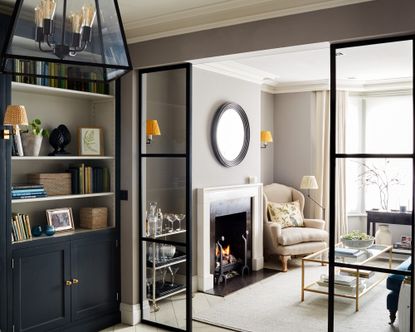
Organizing every room can feel like a mountain to climb, but with the right strategy and home organizing ideas from the experts, it quickly becomes achievable. And the results can be truly transformative. Not just for your house, but for your lifestyle and your mind, too.
The benefits of a well-organized home are well documented. Studies have shown that our surroundings can have a huge effect on how we think and feel. As the experts say, ‘tidy home, tidy mind’. The key is to find an organizational system that works for you.
We can help with that. Whether you’re starting small with cabinets and closets, or tackling an entire room, we’ve compiled a list of effective home organizing ideas – with help from the experts – to ensure every space in your home stays organized, and beautifully organized, at that.
Home organizing ideas
Whichever part of the home you’re tackling, effective organization inevitably starts with a good declutter. This process can be overwhelming, even emotional at times, but it’s worth it in the long run. The less ‘stuff’ you have, the easier it is to keep on top of it, and you’ll likely appreciate it more, too.
1. Focus on one room at a time
Organizing your entire house can feel like a daunting task, particularly if it’s not something you’ve tackled in a while. Professional organizer Vicky Silverthorn of You Need a Vicky (opens in new tab) suggests taking your time and approaching it room-by-room to make it feel more manageable.
‘Don’t overwhelm yourself by pulling the entire contents out in one go – it’ll take far longer than you expect. Start small and focus on one area, work on it and complete it, then stop’.
Assess each item carefully and think about when you last used it. Be strict with yourself by setting clear boundaries. When organizing clothes, don’t keep any you haven’t worn in the last year; rid yourself of expired or duplicate bath products, cleaning solutions and cosmetics when organizing under a bathroom sink, and so on. After all, a cluttered house will make your house look cheap.
Once you’ve determined items that you no longer need, remove them and place them into donation, recycle or rubbish piles. After a good clear out, you’re best-placed to organize the space you have to its best potential.
2. Group like-with-like
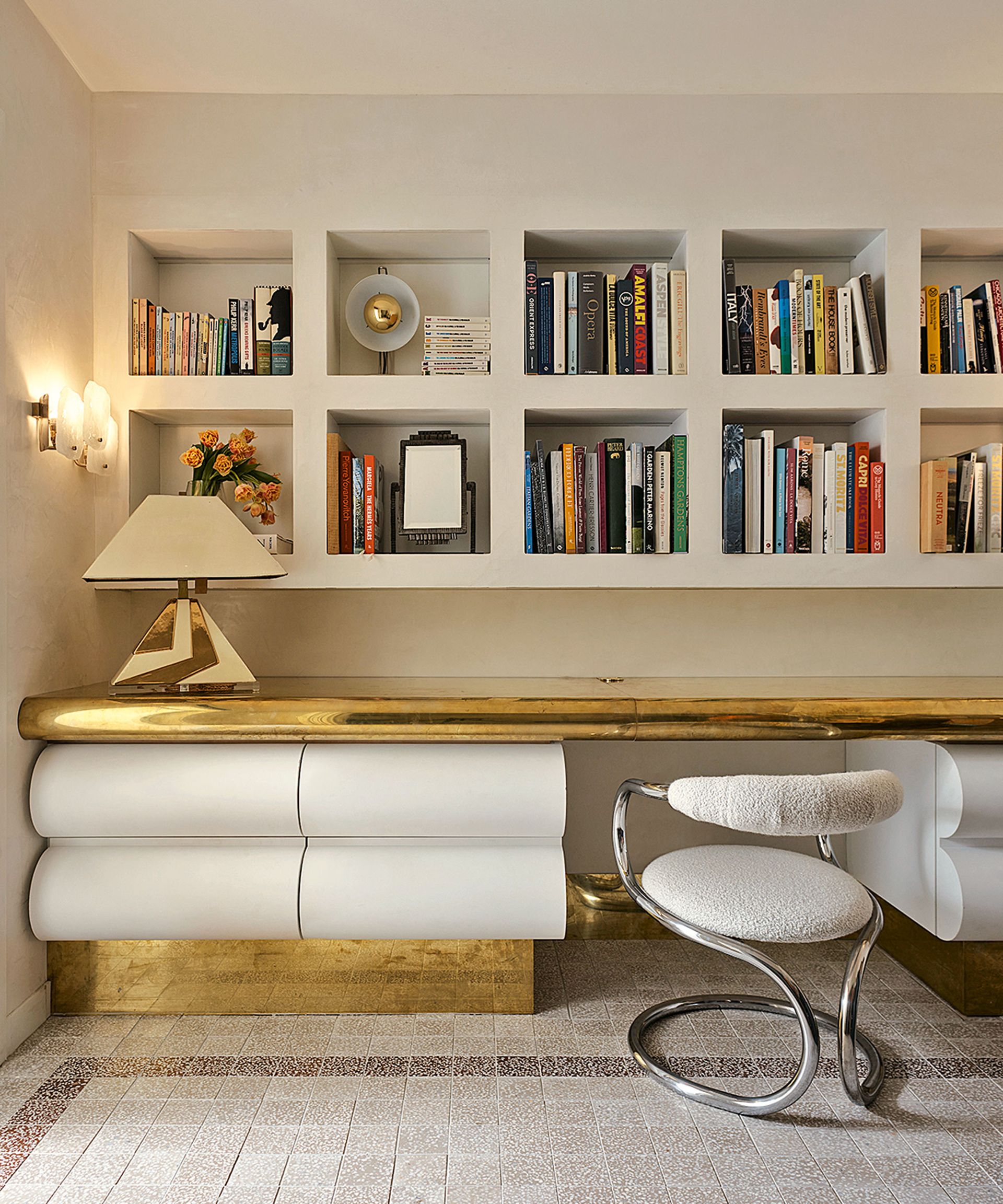
Regardless of what or where you’re organizing, grouping items is an essential step towards implementing an efficient system. The benefit of sorting your ‘stuff’ into categories is two-fold. As well as contributing towards a thorough declutter, it also makes zoning a room that much easier. Home organizer Emma George of Declutter with Emma (opens in new tab) explains in relation to organizing a bedroom.
‘Designating an area for sleeping, dressing, putting makeup on and so on gives structure and creates a nice sense of flow to the room, plus you’ll have a clear idea of what needs to go where. This will help you stay on top of organization going forwards’.
It’s worth noting that when space is limited, so when organizing a small bedroom in this case, these zones will inevitably cross over. To avoid confusion, group like items together into containers or baskets so they can be stored anywhere in the room, then easily moved around as and when you need.
3. Be savvy with where you store things
Prioritizing access to items you use most is rule number one when deciding what goes where. In order to do this effectively, you’ll need to free up prime storage space. This means that when dealing with smaller spaces, such as organizing a small kitchen, you’ll have to think outside of the box – or the room, in this case.
‘I have a sideboard in the dining room, right next to my small kitchen, where I store my bulky crockpot’, says Alexandra, co-founder and interior designer at Clairrow (opens in new tab). ‘I don’t use it every day and relocating it means I free up storage space’.
Similarly, if your cabinets are full, think about alternative solutions; ‘cupboards may be the traditional go-to storage option, but it’s worth bearing in mind that so many items store better in a drawer’, says George Forsyth, director at Drew Forsyth & Co (opens in new tab).
Organizing pots and pans is a great example. A wide drawer allows you to store all your everyday cookware in one readily accessible space, which is much easier than rummaging around at the back of a cabinet. If you do go down this route, consider installing an internal pan rack to avoid them rattling when you open and close the drawer and line the bottom to prevent scratches.
4. Divide and conquer – in all directions
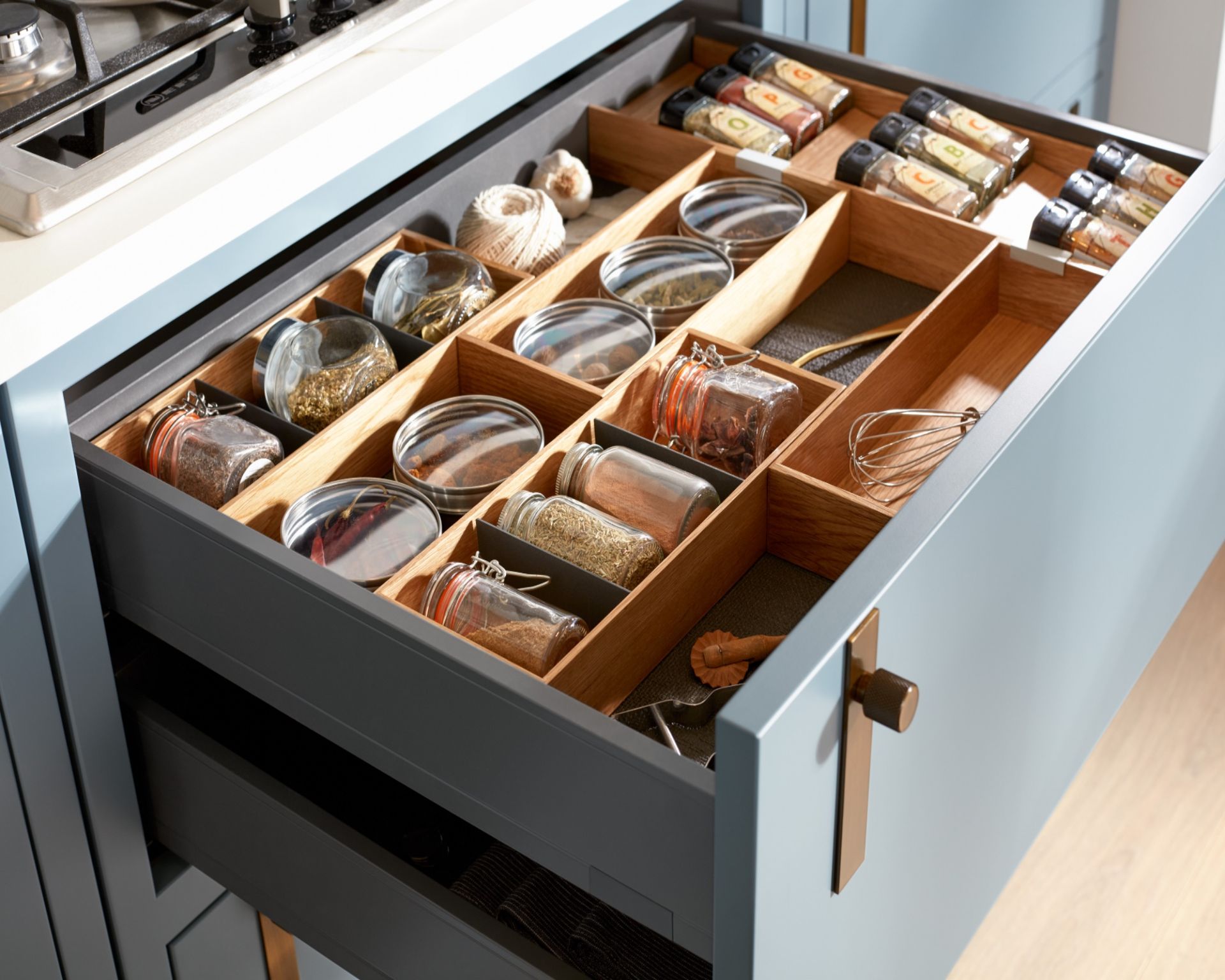
Whatever they hold, drawers tend to dissolve into disordered chaos if not kept in check. Dividers will quickly become your best friend, particularly when it comes to organizing kitchen drawers. Save yourself from hassle – and potentially a burnt meal – by separating sections by category: knives, cutlery, peelers, baking equipment etc.
‘If you have any extra-long items, like a rolling pin, salad servers or a large wooden spoon, try a diagonal organizer’, advises Alexandra. ‘This configuration provides space for bulkier items, and the small corner cubbies are perfect for tiny or oddly shaped utensils’.
When organizing deeper drawers, vertical separators prove useful for storing larger items such as chopping boards and baking trays and for keeping pan lids in check. They’re also worth bearing in mind when organizing Tupperware, too.
5. Enlist storage helpers
From baskets and bins to risers and carousels, integrating additional storage solutions is a great way of utilizing space to its best potential; ‘it’s a really simple way to make the space look tidier and more structured’, says interior designer Katharine Pooley (opens in new tab). Whether you’re dealing with awkward corner cabinets, organizing deep pantry shelves or kitting out closets, make sure to take measurements before investing – you ideally want a snug fit, so you’re not left with any dead space.
6. Go bespoke
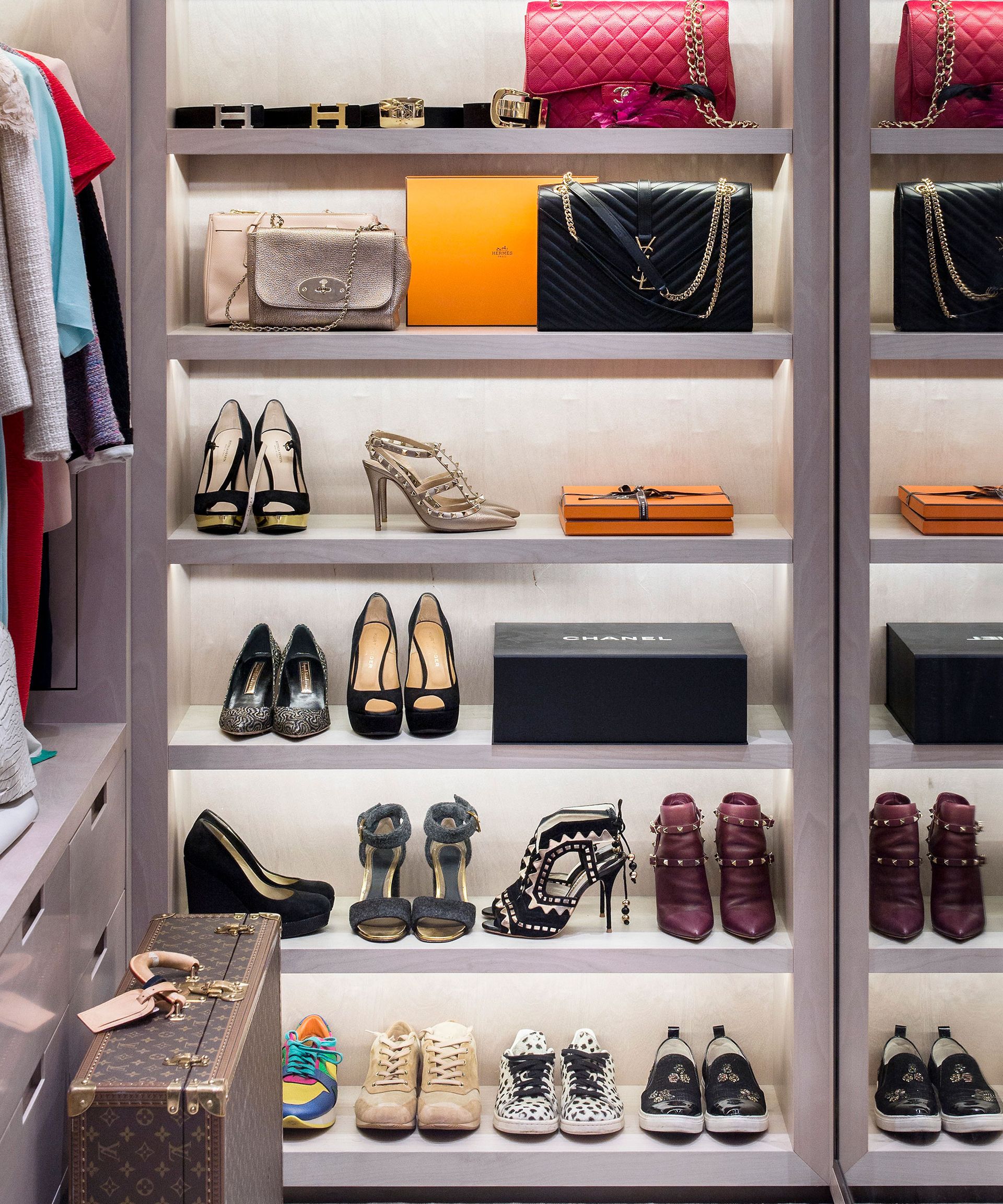
You could even take it one step further with niche inserts, specifically designed to suit your organizational needs, whatever they may be. Fashionistas might opt for built-in cubbies to store handbags and shoes, while for keen cooks, Tom Howley, design director at Tom Howley (opens in new tab), recommends a bespoke option for organizing herbs and spices perfectly.
‘Herbs and spices are one of the trickiest items to keep organized in the kitchen. A bespoke drawer inlay allows you to lay jars with their labels easy to read at a glance, so you can clearly see what you have. Not only is this more efficient when cooking, but storing them in a cool, dark drawer can extend the life and flavor of your spices’.
7. Keep kitchen countertops clear

Keeping surfaces clear of clutter is a prime organizational trick in any room, but it’s particularly relevant when it comes to organizing kitchen countertops. As well as looking smarter, it makes for a more functional cookspace and an easier clean down afterwards.
Keep appliances to a minimum, just one or two that you use everyday – stow the rest away. Group smaller, like items together on trays or in containers to keep them as one – tea and coffee making essentials, cooking oils and seasonings for example. Limit garish packaging by decanting into coordinating storage where you can. Make wall space work hard with shelving, hooks, rails and magnetic strips to hold utensils and knives.
‘To ensure countertops remain neat, tidy and well-organized, we urge our clients to declutter at least once a day’, says Kate Pawlowski, professional organizer and co-founder of Done & Done Home (opens in new tab).
8. Declutter your closet
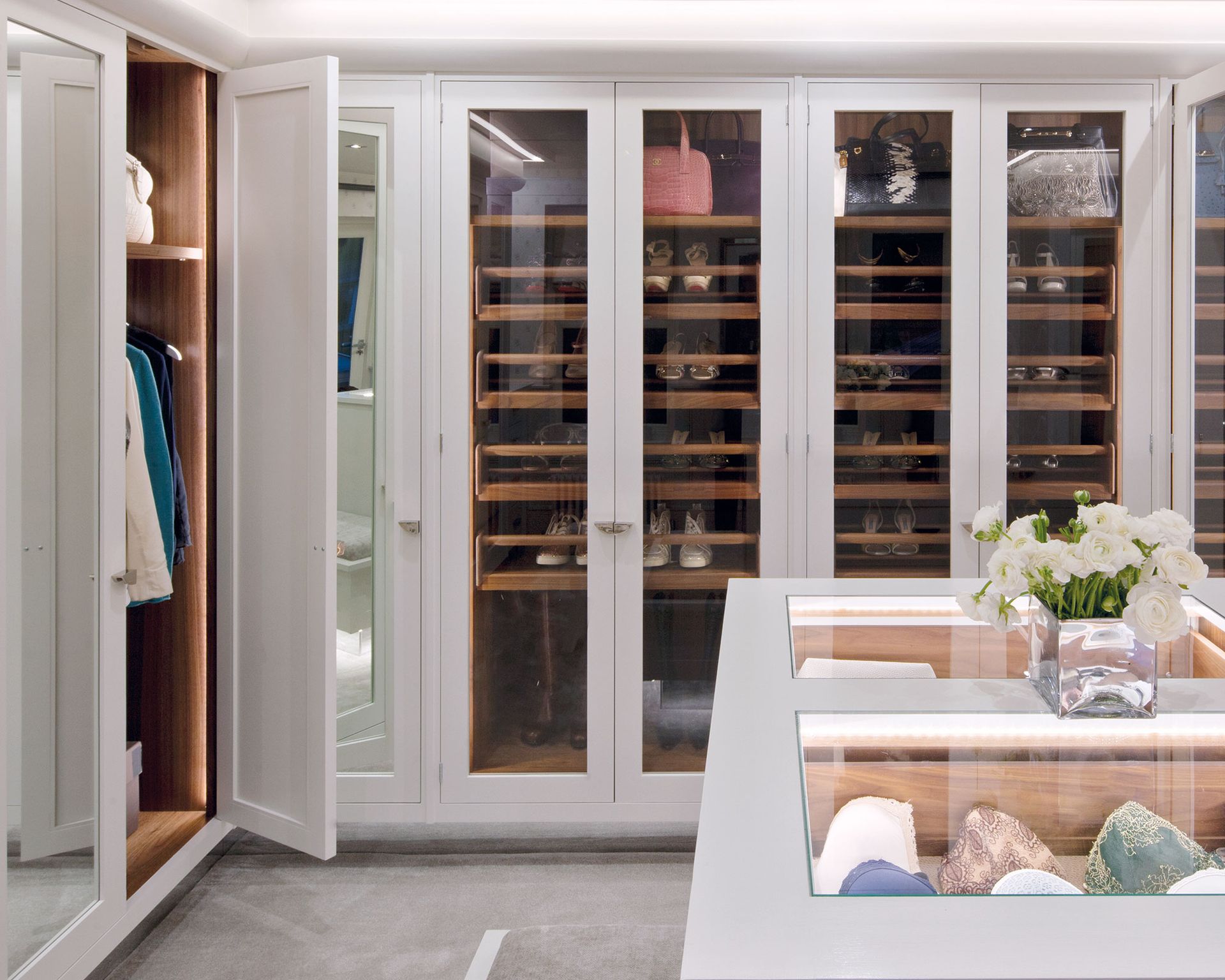
When it comes to organizing a bedroom, you’re best off starting with the closet – having the space to tidy away clothes, shoes and accessories is crucial for a clutter-free room.
Rather than cram in everything you own, reserve it for items you wear or use on a regular basis. Make finding garments easier by maintaining designated areas in your closet for specific types of clothing, shoes and accessories and maximize shelving space with labelled bins and baskets. File fold clothes where you can, so they’re stacked vertically in drawers, rather than laid in flat piles.
If you’re organizing a small closet, the same rules apply, but you might want to consider adapting your closet storage ideas a little to make the most of the space you’ve got.
‘Take a close look at your closet and use the features to your advantage; if you have a lot of shelving, look at using boxes for specific clothing or, if the wardrobes are very tall, look at using multiple hanging rods’, advises interior designer Jenni Greenwood of Greenwood Interior Design (opens in new tab).
9. Be mindful when styling surfaces

When you’re organizing surface space in a bedroom, a neat, tidy and relaxing scheme is the end goal, particularly if it’s a good night’s sleep you’re after. However, just like when organizing a kitchen, practicality needs to play a part too. On-show surfaces usually offer premium ‘easy-to-reach’ space, so it makes sense to utilize it for everyday items. To avoid a cluttered feel, Emma George recommends being mindful of your storage choices to ensure function and style work in harmony.
‘Stylish baskets placed on shelves or chests of drawers are handy for keeping your unsightly items close to hand without sacrificing a stylish scheme. If you’re organizing makeup, consider reusing old candle jars or small plant pots to store brushes and keep everyday items neat and tidy in a small set of clear drawers so they can be easily accessed’, she says.
10. Make pretty pieces part of your scheme
Using trays or containers on top of or in neatly divided drawers is a useful way to corral smaller items – and a handy way to organize jewelry, too. Alternatively, consider integrating your treasured necklaces and bracelets into your room’s décor to free up space for other, less attractive items.
‘Artfully displayed jewelry can transform the aesthetic in a bedroom, not to mention your mood; draped over wall hooks or arranged in pretty trays. Find unique ways to hang your necklaces, which not only prevents the chain from tangling but serves as a sparkly touch in a room or closet, says Alexandra.
11. Don’t forget about food

An orderly cooking zone is not much use without an equally well-ordered food storage system in place. Chilled and dried goods are the obvious place to start but be sure to include organizing a chest freezer in your list of to-dos – usually stored elsewhere in the home such as the garage or utility, they easily get forgotten about.
When it comes to food, knowing where everything is – and being able to find it quickly – is the main aim. Storing items by categories (such as meats, veggies, homemade meals etc) in labeled, transparent containers helps, as does keeping a running inventory, like Kate Pawlowksi.
‘My favorite hack is to stick one to the top of the freezer so there’s a running list for the entire family to refer to. When anything is placed inside, I add a description of what the food is, an expiration date and its location within the freezer’, she says.
To further reduce the chances of food waste, professional organizer Brenda Scott of Tidy My Space (opens in new tab) recommends implementing the ‘FIFO method: ‘Think “first in, first out” – when you purchase an item it goes to the back of the grouping so the item with the nearest expiration date always remains at the front’, she says
12. Tidy toys in every room

When it comes to organizing toys, allocating effective storage ideas to designated rooms of the house, your child’s bedroom, for example, is sensible. But don’t expect them to stay there – any room is a playroom as far as children are concerned. If you’d rather avoid tripping over teddies and treading on Lego, a simple system is your best bet, according to professional organizer Vicky Silverthorn.
‘If it’s too complicated and detailed, or has too many steps, kids (and adults!) won’t stick to it’, she says. With that in mind, consider leaving an empty basket in each room of the house, that your child can throw toys into throughout the day and instil a habit of returning them to their homes before bed. This part doesn’t have to be a chore either – label open baskets, bins and boxes with simple categories so you (and/or your little ones) can simply throw it all back in.
13. Arrange books beautifully
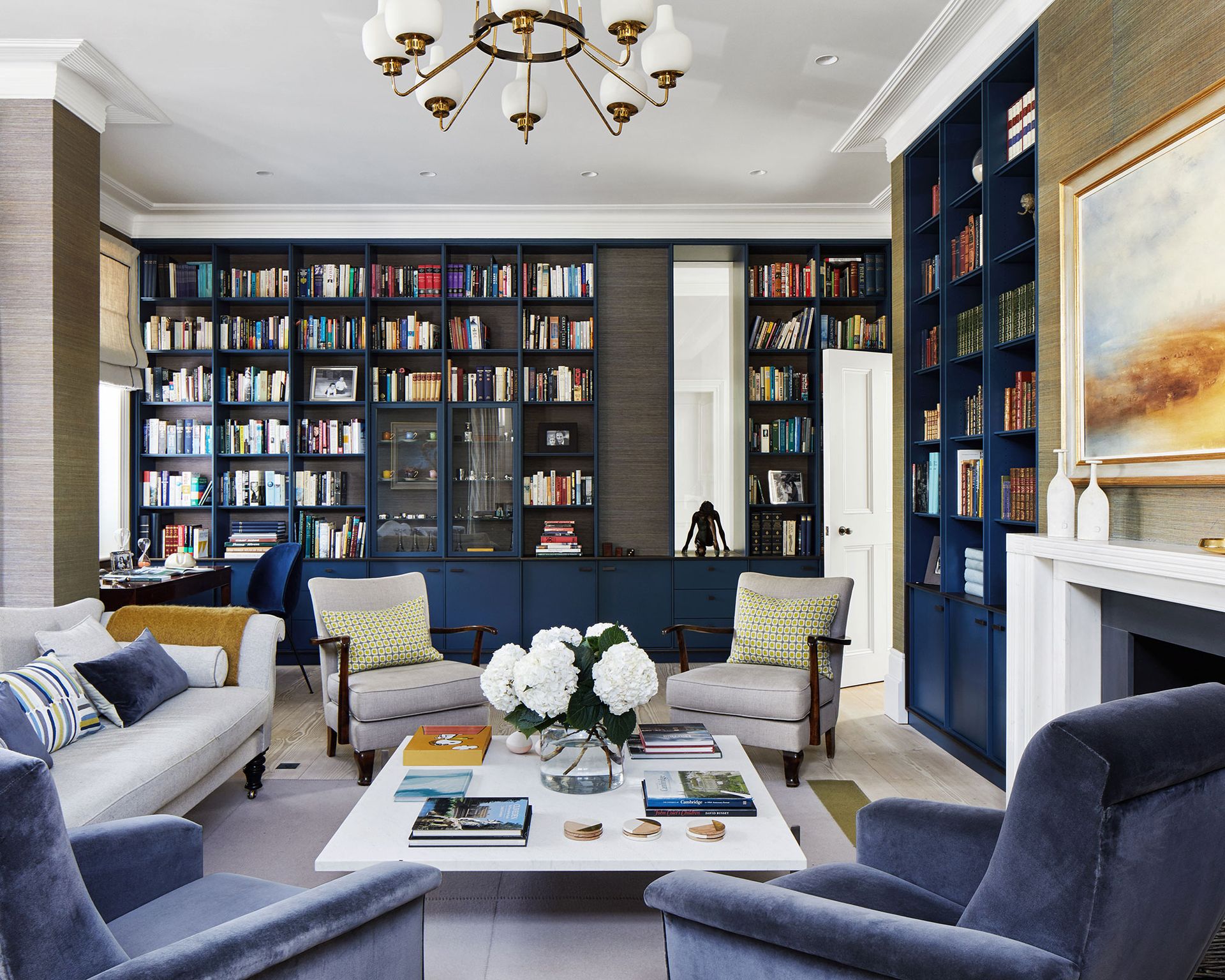
As well as being a storage necessity, a bookshelf has the potential to become a decorative feature of any room. There’s no one size fits all approach when it comes to organizing a bookshelf (opens in new tab). Start by deciding on a system that works for you, whether that’s alphabetically, by genre, color, height order or something else entirely.
To ensure a practical and stylish display, don’t be tempted to cram books in; ‘crowding books tightly on shelves make them impossible to pull out, while overcrowding can make for a cluttered feel’, says home organizer Ben Soreff of House to Home Organizing (opens in new tab). Avoid this with the ‘two-thirds rule’; only fill two-thirds of each shelf with books. Add in decorative accessories or leave clear for a minimalist look.
14. Make the most of vertical space – including the back of a door
An easy way to claim back space in a room is to think vertically. Make your walls work overtime, they’ve got plenty of storage potential. While open shelving is the obvious go-to, rails and hooks can make for a practical and stylish display.
‘Wall-mounted hooks are one of the most creative (and homely) solutions. They can turn your apron collection into textured wall art, your chopping boards into wooden focal points and your backsplash into an untapped storage spot, all while freeing up other space, too’, says Al Bruce, founder of Olive & Barr (opens in new tab).
Fitting a rack or narrow shelving to the back of a kitchen cabinet or pantry door is also a clever hack. As well as small jars, tins, packets etc, use it to store Tupperware or pan lids, and store the corresponding containers and pans in the cabinet itself.
Utilizing the back of the door works equally well in closets too. Depending on what you’ve You could always swap in cubby-style hanging organizers designed to hold shoes, bags and accessories, depending on what you’ve got to store.
When it comes to corralling smaller items, stacking storage is always a good bet. They allow you to store more on any surface, whether it be in a bathroom cabinet, on a chest of drawers or even in the fridge.
15. Invest in multifunctional furniture

You may feel they’re useful for hiding clutter, but bulky cabinets, sideboards, dressers and wardrobes encourage hoarding and can quickly undo all your good work – out of sight, out of mind is not conducive to effective organization! It’s also a lot of floor space to dedicate to one sole purpose, whether you’re organizing a small space or not.
To maximize available space and practise good organizational habits, choose furniture that has multi-uses instead. An ottoman or storage bed is a great example; experts highly recommend the investment.
‘Ottomans provide the most impressive storage, with the entire mattress base lifting up via an easy-to-operate hinge mechanism – perfect for those seeking extra space to store spare linens and bulky items like winter duvets or ski wear,’ says Phillipa MacDermott at Feather & Black (opens in new tab).
Alternatively, think about how you could create multifunctional storage pieces with your existing furniture. A small bookcase as a nightstand or a storage trunk that doubles up as a seat in the hallway to take off your shoes, for example.
How do I begin to organize my house?
Organizing a house all in one go can feel daunting, so it’s best to approach it room-by-room. It feels less daunting this way. One of the best organizational tips we can offer is to start with a good clear out. Go through each item and inspect it thoroughly. Create piles for keeping, donating, binning/recycling. Move any items that don’t belong in that room to their rightful home.
If you’re organizing a small space, consider putting aside lesser-used items at this point – seasonal clothing, sentimental items, shoes, sports equipment, glassware, kitchen appliances, and so on. Box them up and store them somewhere else in the home to free up room for other things.
After a good clear out, you’re well-placed to start thinking about how to organize the space to its best potential.
How do I organize my house and keep it organized?
The best way to organize your house (and ensure it stays that way) is to implement simple, easy-to-follow organizational systems. Even with the best intentions, if it’s too complicated, you’re unlikely to stick to it. But stick to it you must. Trust us, taking the extra 30 seconds to put something back in the right spot will save you so much time and effort in the long run. Clutter that’s allowed to build over time can quickly put pay to any organizational system, not to mention take up valuable storage space. Setting time aside to regularly review your belongings is the best way to identify items you no longer need before they pile up. Store them in a container tucked out of the way, in the corner of your closet or in the garage for example, then donate the contents once it’s full.
For 10 years, Tara King worked as a Content Editor in the magazine industry, before leaving to become freelance, covering interior design, wellbeing, craft and homemaking. As well as writing for Ideal Home, Style at Home, Country Homes & Interiors, Tara’s keen eye for styling combined with a passion for creating a happy – and functional – family home has led to a series of organization and cleaning features for H&G.
-
-
 Vitamix E310 Explorian Blender review: is Vitamix's basic blender worth it?
Vitamix E310 Explorian Blender review: is Vitamix's basic blender worth it?We put the Vitamix E310 Explorian to the test to see if this entry-level blender is as good as the rest of the brand
By Helen McCue • Published
-
 Super Bowl party checklist – everything you need to get ready for the big game
Super Bowl party checklist – everything you need to get ready for the big gameGet ready for game day with the ultimate Super Bowl Party checklist
By Zara Stacey • Published

